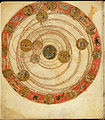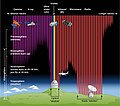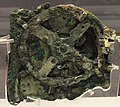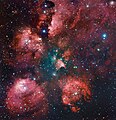
Back Portaal:Sterrekunde Afrikaans بوابة:علم الفلك Arabic بوابة:علم الفلك ARZ Portal:Astronomiya Azerbaijani Партал:Астраномія Byelorussian Портал:Астрономия Bulgarian প্রবেশদ্বার:জ্যোতির্বিজ্ঞান Bengali/Bangla Portal:Astronomija BS Portal:Astronomia Catalan دەروازە:گەردوون CKB
|
The Astronomy Portal
Introduction Astronomy is a natural science that studies celestial objects and the phenomena that occur in the cosmos. It uses mathematics, physics, and chemistry in order to explain their origin and their overall evolution. Objects of interest include planets, moons, stars, nebulae, galaxies, meteoroids, asteroids, and comets. Relevant phenomena include supernova explosions, gamma ray bursts, quasars, blazars, pulsars, and cosmic microwave background radiation. More generally, astronomy studies everything that originates beyond Earth's atmosphere. Cosmology is a branch of astronomy that studies the universe as a whole. Astronomy is one of the oldest natural sciences. The early civilizations in recorded history made methodical observations of the night sky. These include the Egyptians, Babylonians, Greeks, Indians, Chinese, Maya, and many ancient indigenous peoples of the Americas. In the past, astronomy included disciplines as diverse as astrometry, celestial navigation, observational astronomy, and the making of calendars. Professional astronomy is split into observational and theoretical branches. Observational astronomy is focused on acquiring data from observations of astronomical objects. This data is then analyzed using basic principles of physics. Theoretical astronomy is oriented toward the development of computer or analytical models to describe astronomical objects and phenomena. These two fields complement each other. Theoretical astronomy seeks to explain observational results and observations are used to confirm theoretical results. Astronomy is one of the few sciences in which amateurs play an active role. This is especially true for the discovery and observation of transient events. Amateur astronomers have helped with many important discoveries, such as finding new comets. (Full article...) General images -The following are images from various astronomy-related articles on Wikipedia.
This is a Featured article, which represents some of the best content on English Wikipedia.
 The rings of Uranus are intermediate in complexity between the more extensive set around Saturn and the simpler systems around Jupiter and Neptune. The rings of Uranus were discovered on March 10, 1977, by James L. Elliot, Edward W. Dunham, and Jessica Mink. William Herschel had also reported observing rings in 1789; modern astronomers are divided on whether he could have seen them, as they are very dark and faint. By 1977, nine distinct rings were identified. Two additional rings were discovered in 1986 in images taken by the Voyager 2 spacecraft, and two outer rings were found in 2003–2005 in Hubble Space Telescope photos. In the order of increasing distance from the planet the 13 known rings are designated 1986U2R/ζ, 6, 5, 4, α, β, η, γ, δ, λ, ε, ν and μ. Their radii range from about 38,000 km for the 1986U2R/ζ ring to about 98,000 km for the μ ring. Additional faint dust bands and incomplete arcs may exist between the main rings. The rings are extremely dark—the Bond albedo of the rings' particles does not exceed 2%. They are probably composed of water ice with the addition of some dark radiation-processed organics. (Full article...)Did you know -
More Did you know (auto generated)
WikiProjectsSelected image - A radio-quiet neutron star is a neutron star that does not seem to emit radio emissions, but is still visible to Earth through electromagnetic radiation at other parts of the spectrum, particularly X-rays and gamma rays. Artist's illustration of an 'isolated neutron star' -- one without associated supernova remnants or binary companions. Astronomy News
June anniversaries
Astronomical eventsAll times UT unless otherwise specified. Portal:Astronomy/Events/June 2024 TopicsSubcategoriesSelect [►] to view subcategories
Things you can do
WikibooksThese books may be in various stages of development. See also the related Science and Mathematics bookshelves.
WikijuniorAssociated WikimediaThe following Wikimedia Foundation sister projects provide more on this subject:
Discover Wikipedia using portals Shortcuts to this page: Astronomy portal • P:ASTRO Purge server cache |


























































